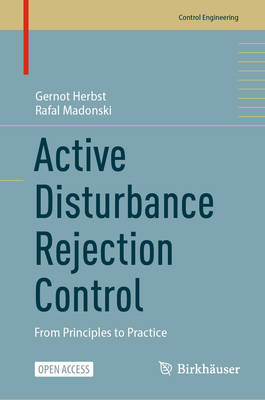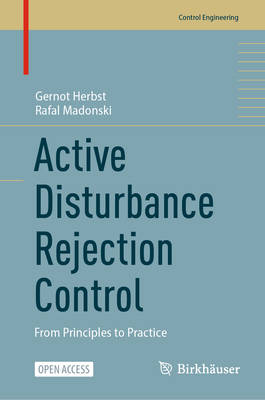
- Afhalen na 1 uur in een winkel met voorraad
- Gratis thuislevering in België vanaf € 30
- Ruim aanbod met 7 miljoen producten
- Afhalen na 1 uur in een winkel met voorraad
- Gratis thuislevering in België vanaf € 30
- Ruim aanbod met 7 miljoen producten
Omschrijving
This open access text offers the first comprehensive introduction to the fundamental principles and practical implementation of Active Disturbance Rejection Control (ADRC). Drawing on their years of experience in both research and industry, the authors have designed the text to be accessible to readers at any level of knowledge and experience with ADRC. Multiple entry points and paths through the text are defined so that it can be easily adapted to their specific needs.
Part I covers the theoretical foundations of ADRC, giving readers the basic information in a self-contained, tutorial style. Emphasis is placed on first developing an intuition for ADRC through illustrative examples inspired by real control problems. The main concepts are then introduced and explored in a more formal and concise manner using standard control-domain-related terminology.
Part II demonstrates methods for applying ADRC in practice through software-based implementation. Utilizing laboratory testbeds to mimic real control problems from process and control areas, the authors illustrate the use of software through both model-based environments - including MATLAB/Simulink - and low-level C programming language. Common issues that one can encounter when implementing controllers in the real world are also examined, and specific solutions to these problems are offered that retain the simplicity of ADRC.
This book can be used as a textbook, handbook, or reference manual, and through its many entry points, can be easily picked up by students, practitioners, and scientists. Having in mind its introductory nature, the prerequisites for studying the considered subject are intentionally not very strict. Readers should have at least basic knowledge of systems and controls, as well as an understanding of core mathematical concepts of calculus, linear algebra, and differential equations.
Specificaties
Betrokkenen
- Auteur(s):
- Uitgeverij:
Inhoud
- Aantal bladzijden:
- 214
- Taal:
- Engels
- Reeks:
Eigenschappen
- Productcode (EAN):
- 9783031726866
- Verschijningsdatum:
- 23/11/2024
- Uitvoering:
- Hardcover
- Formaat:
- Genaaid
- Afmetingen:
- 155 mm x 235 mm
- Gewicht:
- 498 g

Alleen bij Standaard Boekhandel
Beoordelingen
We publiceren alleen reviews die voldoen aan de voorwaarden voor reviews. Bekijk onze voorwaarden voor reviews.











